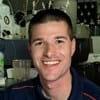Explore all the information on
Swine nutrition
Pigs require a number of essential nutrients to meet their needs for maintenance, growth, reproduction, lactation, and other functions. However, factors such as genetic variation, environment, availability of nutrients in feedstuffs, disease levels, and other stressors may increase the needed level of some nutrients for optimal performance and reproduction.
Swine require six general classes of nutrients: water, carbohydrates, fats, protein (amino acids), minerals, and vitamins. Energy, although not a specific nutrient, is an important nutritional component and is primarily derived from the oxidation of carbohydrates and fats. In addition, amino acids (from protein) that exceed the animal’s requirements for maintenance and tissue protein synthesis provide energy when their carbon skeletons are oxidized. Antibiotics, chemotherapeutic agents, microbial supplements (prebiotics and probiotics), enzymes, and other feed additives are often added to swine diets to increase the rate and efficiency of gain, to improve digestibility, and for other purposes, but they are not considered nutrients.
Pigs require a more concentrated diet and should be fed a less-fibrous feed than cattle, sheep, or horses. As they grow, their nutritional requirements change and the diet should meet their needs in various phases of growth and stages of production.
Introduction Oligosaccharides are a group of carbohydrate polymers containing 3 to 10 simple sugars that can be fed to pigs as prebiotics. Mannan- (Davis et al., 2002;3 Rozeboom et al., 20054 ), chito- (Liu et al., 20085 ), and fructo-oligosaccharides (Gebbink et al., 19996 ), have been shown to improve growth performance in young pigs. Possible mechanisms by which oligosaccharides benefit growth performance have been proposed and center on improving health status of the pig....
Comments : 1
Recommendations: 0
AIRDRIE, Alberta — Bringing together enhanced resources to support swine producers across Canada and into the U.S. is the focus of a new partnership between two innovation-focused nutrition companies. Nutrition Athena Inc, which is a division of Groupe Cérès Inc., and Nutrition Partners Inc. have announced they have united under a new integrated ownership model. The enhanced structure is designed to optimize value and services...
Comments : 0
Recommendations: 0
Introduction In the pork industry, the trend towards producing lean carcasses is still occurring, concurrently with a demand from certain specific markets for pork products with high intramuscular fat (IMF) in an attempt to ensure palatability. A positive effect of IMF content on the eating quality of pork has been reported by a number of authors (Castell, 1994; Fernandes et al., 1999; Brewer et al., 2001)....
Comments : 1
Recommendations: 0
Swine have a well-developed sense of taste and smell, and they are very picky about what they eat! Listen to Luiz Souza, Technical Manager in Asia Pacific talking about how to improve and sustain feed intake at critical points during swine production. ...
Comments : 0
Recommendations: 1
The Allen D. Leman Swine Conference is an annual educational event for the global swine industry. It is internationally acclaimed for bringing science-driven solutions to the complex challenges facing the industry. Each year hundreds of participants from over 20 countries, including swine veterinarians and other professionals working in swine...
Comments : 2
Recommendations: 0
Introduction Soybean meal is one of the most readily available and economical protein sources commonly fed to pigs. Due to a number of anti-nutritional factors, its inclusion in newly weaned pig diets has been limited. Thus, specialty animal proteins, such as animal plasma, blood cells, or fish meal have been commonly added as highly digestible amino acid sources in starter diets. In recent years, the cost and variability of specialty animal proteins has increased while...
Comments : 0
Recommendations: 0
...
Comments : 1
Recommendations: 0
...
Comments : 0
Recommendations: 0


Interaction effects of feeding Bacillus subtilis DSM 32315 in weaned piglets
Suggested link
1. Introduction Olive (Olea europaea) cultivation plays an important economic and social role in the Mediterranean region. In 2014 more than 1.74, 0.29, and 0.21 million tons of olive oil were produced in Spain, Italy, and Greece, respectively [1]. It is concluded that olive oil extraction produces a high quantity of olive by-products (pulp or cake), which represents a severe environmental problem [2]. Therefore, utilization of these residues in the diets of farm animals...
Comments : 0
Recommendations: 0
1. Introduction Early-life nutrition profoundly influences the developing neonate, with some effects that are long-lasting and irreversible, as is the case for iron. Iron is an essential micronutrient for many biological processes, yet iron deficiency is considered the most prevalent micronutrient deficiency worldwide [1]. Though iron deficiency affects individuals of all age groups, women of childbearing age and children from birth to five years of age are at increased risk for...
Comments : 0
Recommendations: 0
Introduction Sodium and chloride are involved in several of the body’s processes, such as the sodium potassium pump and osmotic regulation. Traditionally, the most common source of Na and Cl in swine diets is added salt. Hagsten et al. noted improvements in ADG and F/G when at least 0.10% of salt was added to corn-soybean meal diets for pigs from 40 to 200 lb. However, Alcantara et al. reported that in corn-soybean meal diets for growing pigs (55 to 110 lb), ADG and ADFI...
Comments : 1
Recommendations: 0
INTRODUCTION The post-weaning period may be considered critical for piglets, once they are submitted to several stress situations (SOBESTIANSKY et al., 2001) such as environmental changes (new facilities and/ or environmental temperatures), removal from the sow, replacement of liquid with solid diets, and social tensions arising from getting animal grouped back after being separated (FERREIRA et al., 2001). Thus, aiming to minimize the stress which is observed in this initial...
Comments : 1
Recommendations: 0
ARLINGTON, Va. – July 23, 2020 – The American Feed Industry Association (AFIA) honored two individuals in the animal science field this week at the American Society of Animal Science (ASAS)–Canadian Society of Animal Science–Western Section ASAS virtual annual meeting and tradeshow. Martin Nyachoti, Ph.D., of the University of Manitoba (U of M), received the AFIA-ASAS Non-Ruminant Animal Nutrition Research Award, and Terry Engle, Ph.D., of Colorado State University...
Comments : 1
Recommendations: 5
The global pork production is expected to rise by 10% over the next decade. Given, however, that pig farmers worldwide are currently struggling to keep up with increasingly stringent regulations on nitrogen (N) pollution emission, now is clearly not the time to rest on our laurels,...
Comments : 3
Recommendations: 9
1. Introduction A sustainable use of dietary phosphorus (P) is necessary to minimize its excretion and to limit the use of non-renewable mineral phosphates being progressively a limiting source of P [1]. This, while animal growth performance needs to be fully expressed. The digestive and metabolic processes of P are complex as they are closely linked with those of calcium (Ca) [2]. Excessive dietary Ca may limit P absorbability as well as zinc (Zn) bioavailability, whereas...
Comments : 0
Recommendations: 0
Eric van Bochove (Director, Research, Development & Technology Transfer, Sherbrooke, Québec & Normandin Research Centres, Science and Technology Branch) made the announcement: "We are pleased to present Danyel Bueno Dalto, the new research scientist at the Sherbrooke Research and Development Centre and a specialist in the swine nutrition and metabolism of micronutrients (trace minerals and vitamins)".
"Danyel received his Bachelor’s degree in veterinary medicine...
Comments : 0
Recommendations: 0


Interaction effects of feeding Bacillus subtilis DSM 32315 in weaned piglets
Suggested link
Joaquín Paulino (Animal Nutrition Consultant, Precision Animal Nutrition) will be one of the speakers at the Online Course on Pig Farming, organized by the Universidad Nacional de San Cristóbal de Huamanga in Perú.
The event will be held on June 25th and 30th, and July 7th. His lecture will be "Modern Nutrition for the Modern Pig".
Other experts that will participate in this event are Carlos Campadabal, Julio Pupa, Fabio Catunda, Fausto Solís,...
Comments : 0
Recommendations: 0
Royal DSM, a global science-based company in Nutrition, Health and Sustainable Living, announces that it has reached agreement to acquire Erber Group for an enterprise value of €980m. The value of the transaction represents an EV/EBITDA multiple of about 14x the 2020 EBITDA (fiscal year ending September 2020). The transaction – which...
Comments : 0
Recommendations: 3
Chr. Hansen Holding A/S has entered into an agreement with the owners of UAS Laboratories LLC (“UAS Labs”) to acquire 100% of the Wisconsin based B2B company specializing in clinically documented probiotics. The acquisition of UAS Labs will further strengthen and expand Chr. Hansen’s global microbial platform and Human Health...
Comments : 0
Recommendations: 0
Introduction Pelleting is a feed processing method shown to improve handling and transportation characteristics of feeds, while reducing ingredient segregation during handling, decreasing dust levels, and improving feed utilization in swine. The use of flat die technology (cold pelleting) has received little attention at this point compared to thermal pelleting for commercial feed applications. Its unique advantage of layout (flat-bed compared to standard ring die) requires only...
Comments : 0
Recommendations: 1






.jpg&w=3840&q=75)









